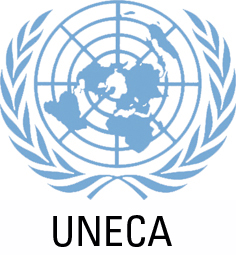Focal point
Location
P.O. Box 3001
Addis Ababa, Ethiopia
Established by the Economic and Social Council (ECOSOC) of the United Nations (UN) in 1958 as one of the UN's five regional commissions, ECA's mandate is to promote the economic and social development of its member States, foster intra-regional integration, and promote international cooperation for Africa's development.
Made up of 54 member States, and playing a dual role as a regional arm of the UN and as a key component of the African institutional landscape, ECA is well positioned to make unique contributions to address the Continent’s development challenges.
ECA’s thematic areas of focus are as follows:
- Macroeconomic Policy
- Regional Integration and Trade
- Social Development
- Natural Resources
- Innovation and Technology
- Gender
- Governance
Members:
Resources
Displaying 531 - 535 of 872Indicators for agricultural development
This paper concentrates more on the indicators that deal more or less directly with the increase of agricultural productivity and production. There is the fundamental constraint then that because of the imprecise nature of some of the factors to be measured, the indicators themselves may not in fact be measuring what they were meant to measure. However, this does not relieve the user of constructor of indicators from the obligation to offer a hypothesis as a start and then work to the final “theorem” for that is what all indicators at the start are hypothesis.
Les indicateurs du développement agricole
Le présent document ne prétend pas dorme une définition globale des indicateurs du développement agricole; il se "borne plutôt a dégager certaines considérations de base dont on tient compte dans leur élaboration.
Indicators for agricultural development
This paper concentrates more on the indicators that deal more or less directly with the increase of agricultural productivity and production. There is the fundamental constraint then that because of the imprecise nature of some of the factors to be measured, the indicators themselves may not in fact be measuring what they were meant to measure. However, this does not relieve the user of constructor of indicators from the obligation to offer a hypothesis as a start and then work to the final “theorem” for that is what all indicators at the start are hypothesis.
Les indicateurs du développement agricole
Le présent document ne prétend pas dorme une définition globale des indicateurs du développement agricole; il se "borne plutôt a dégager certaines considérations de base dont on tient compte dans leur élaboration.
Rapport sur l'organisation de la production, de la multiplication et de la distribution des semences de riz, de haricot et de soja dans les États membres de la Communauté Économique des Pays des grands Lacs
De tous les facteurs de production nécéssaires à l'amelioration du rendement des récoltes et au développement agricole, les semences de qualité supérieure sont l'élément le plus important et le moins onereux


